
5 minute read
STRATEGIC PLAN
EXEMPT EMPLOYEES OVERTIME RULE CHANGES
L&I’S PROPOSED RULE CHANGES ON REQUIREMENT OF OVERTIME PAY MOVES FORWARD
The Department of Labor and Industries (L&I) has proposed changes to the executive, administrative, and professional overtime exemptions. Among the changes is an increase in the minimum salary threshold that affects all employers who will be required to pay salaried, overtime-exempt workers.
INCREASE IN THRESHOLD
Currently, the threshold exempt from overtime pay set by the U.S. Department of Labor is $23,660 per year. L&I is proposing to set the threshold at 2.5 times the state’s minimum wage which would be $79,872 by 2026 when the new changes would be implemented. This is three times the current threshold and more than twice what the U.S. Department of Labor is currently proposing as the new federal standard.
PROCESS MISSED MARK
BIAW, along with many in the business community, urged L&I to wait until the federal update was complete and then move forward in a fair, comprehensive and meticulous manner. The proposed rule change process should have taken into account all affected parties, the business environment of each region, and the proportion of impact any changes by L&I would have had on business in those regions.
BURDEN TO BUSINESS
BIAW believes the new rule changes will harm current salaried, exempt employees if the rules change and are reclassified as hourly. Employees may have their hours reduced and have less flexibility, among other benefits that come with exempt status. Employers may discourage employees from attending events after regular business hours to avoid overtime obligations. Many salaried employees enjoy and are encouraged to use flex time to meet their professional and personal needs. Any significant rule changes will place a burden on business and remove flexibility for employees.
As L&I continues to move forward with the proposed overtime rule changes, BIAW will continue to be involved and active in the process.
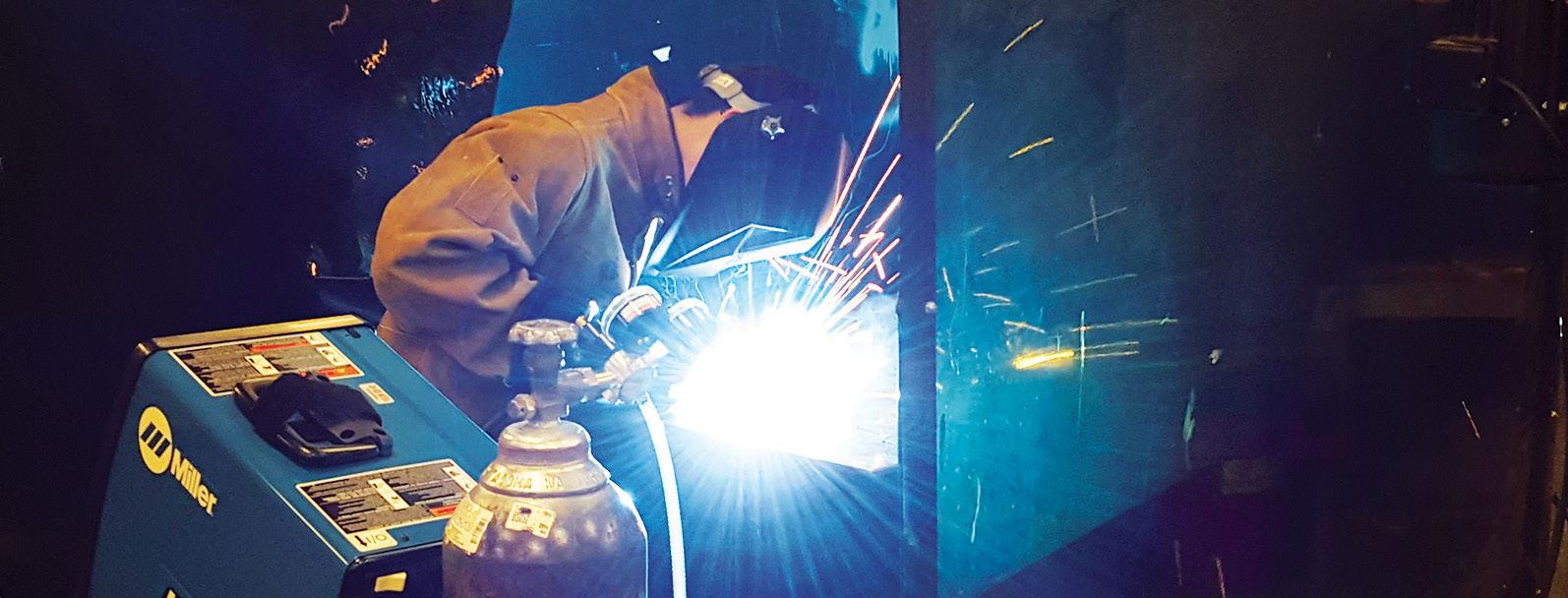
FINDING SOLUTIONS SKILLED TRADES TRAINING
BIAW COLLABORATES WITH CTE PROGRAM TO BOLSTER INDUSTRY’S WORKFORCE IN WASHINGTON
WHAT IS CTE?
Career and Technical Education (CTE) is a term for educational programs that specialize in the skilled trades, applied sciences programs were developed to help ease the skilled trades labor shortage by integrating technical career skill proficiencies, applied sciences, modern technologies, and career preparation. In short, CTE program’s goal is to help students plan for life beyond high school.
In the state of Washington, every school district offers some type of CTE service, such as the leadership organization, Future Farmers of America. An excellent model of CTE is Yelm High School’s flourishing nationally-recognized CTE program.
Yelm Community Schools CTE Director Teri Pablo has dedicated the last nine years to ensuring students in the Yelm School District have access to career choice options and paths through its CTE program.
“We want to make sure we offer and create successful, core-equivalent classes to help students meet graduation requirements and build the skills they need to move into a career path of their choice, ” said Pablo.
“Whether that is moving them right into a full-time job, apprenticeship, a two-year or four-year degree path, we want all our students to be prepared and ready.”
YELM HIGH SCHOOL
Yelm High School has seven different program areas with a total of 40 different pathways a student could take, such as construction, home shop, landscaping, automotive, STEM, welding, sustainable habitats, among many others.
“There are 1,400 students enrolled at Yelm High School and CTE serves approximately 900 to 1,000 of them a year,” explained Pablo.
“We want our students to be cogni-
BIAW Workforce Development Manager Al Audette with Yelm Community Schools CTE Director Teri Pablo. BIAW is a partnering with the Yelm High School CTE program to help promote career options in the skilled trades and apprenticeship programs.
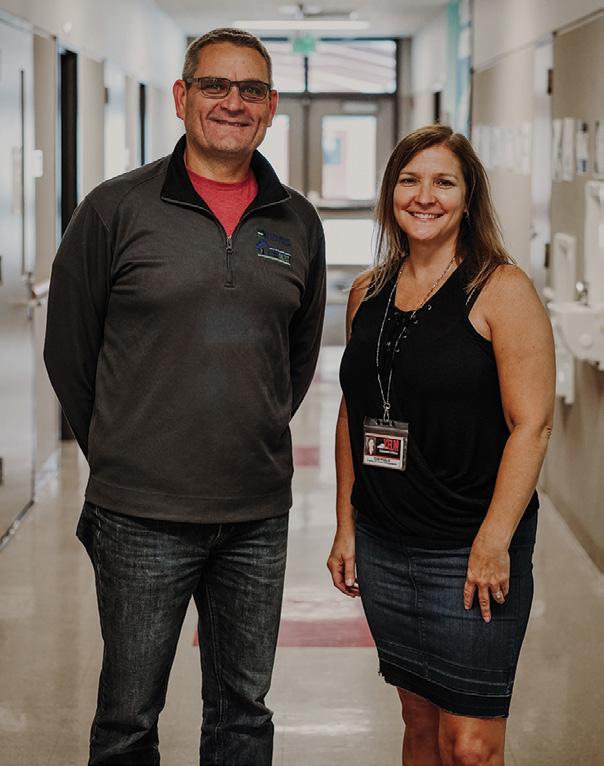
zant of their class choices so they can make a career choice that best fits their wants and needs.”
CTE is more than an elective class; it gives students more ownership
than most high school schedules.
“I think the most rewarding part of my job is seeing students make that connection to what they want to do in the future and knowing that they are empowered to make those choices for themselves,” said Pablo.
“You never want to make them feel like someone else decided for them, but rather they are doing it on their own.”
WHO DOES CTE TARGET?
CTE programs are available to every high school student. Trades in Motion Building our industry workforce one trade intern at a time
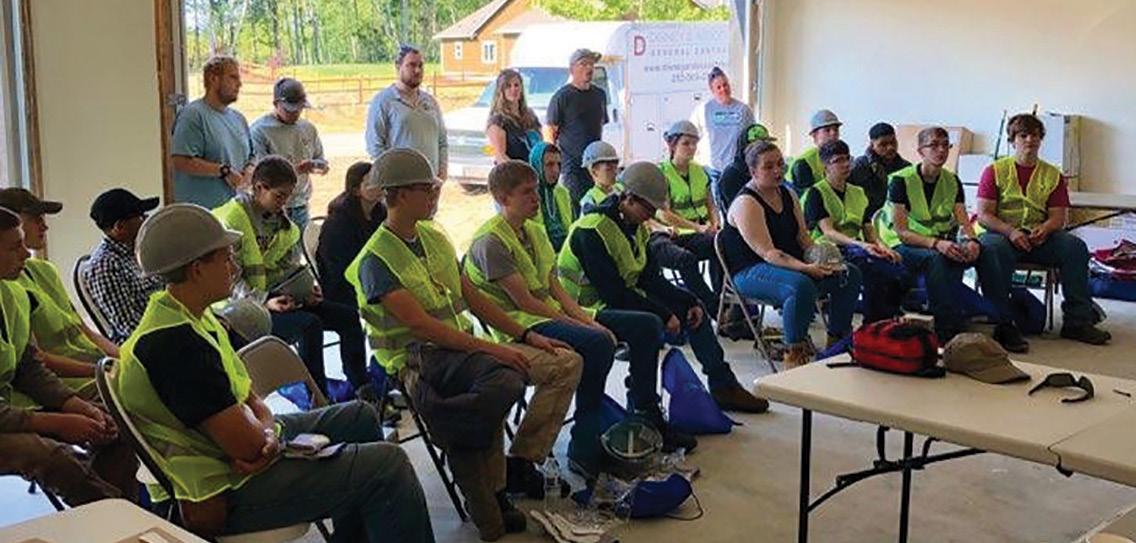
Yelm High School CTE program students get hands-on training instruction in cement work. The CTE program’s non-traditional, hands-on “classrooms” training is another option for students planning careers in the skilled trades workforce.
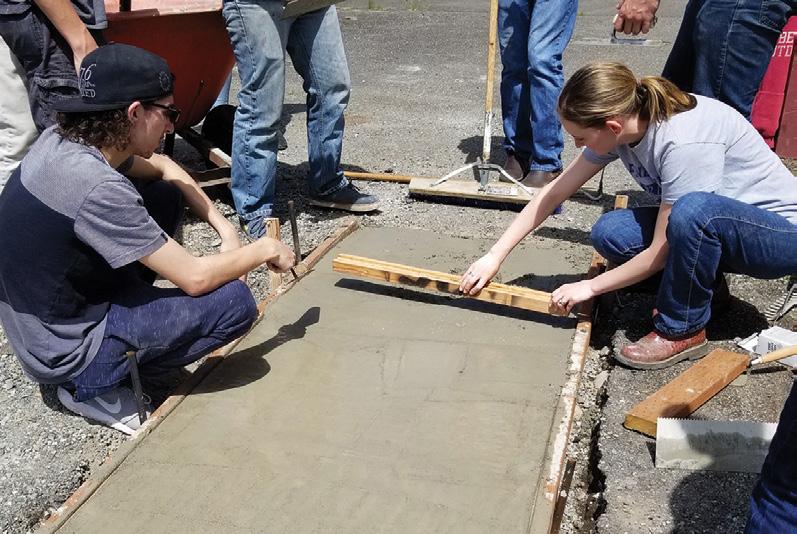
“We are creating programs, designing opportunities and instruction that prepares students for their future and not the future that we had,” added Pablo.
“The myth is if you can’t make it in other classes, you can make it in CTE. That’s just not true. You can be just as successful graduating from a CTE program as a 4-year university. CTE is for all students of all learning levels and abilities.”
HANDS-ON LEARNING
A component of Yelm’s CTE program is the opportunity for students to experience learning outside of the typical classroom setting. This is called extended learning.
“We offer CTE students the option of participating in “field trips” often times to construction sites. We can talk about safety and wearing goggles, but when a student walks onto a jobsite and experiences it first hand, it clicks for many of them.”
The process of teaching students about
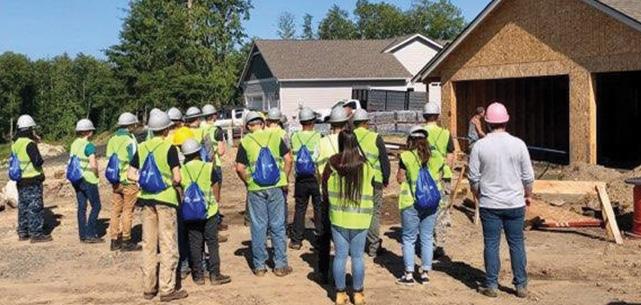
KBA HAND-ON LEARNING EXPERIENCE
Hosted by the Kitsap Building Association (KBA), Trades in Motion is all about sharing the construction industry with high school students from across Kitsap County.
Over 20 young men and women from the Kitsap county area were bused each day to The Ridge at Buck Lake; a development that is currently under construction. While at the jobsite, students were separated into groups of four and rotated through five construction trades: carpentry, electrical work, plumbing, painting and coating, and HVAC installation. Each student had an opportunity to not only learn what goes into building a home, but actually participate—hands-on—in the process.
Trades in Motion is KBA’s endeavor to educate high school students about the home building industry, and perhaps pique their vocational interest in the trades.
career opportunities has and will continue to evolve. What worked just ten years ago may not apply in another three.
CTE programs are another option for students exploring a career the trades profession.




